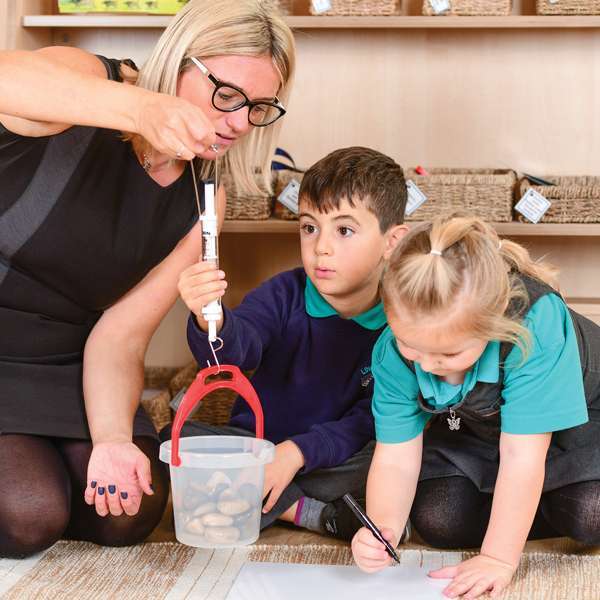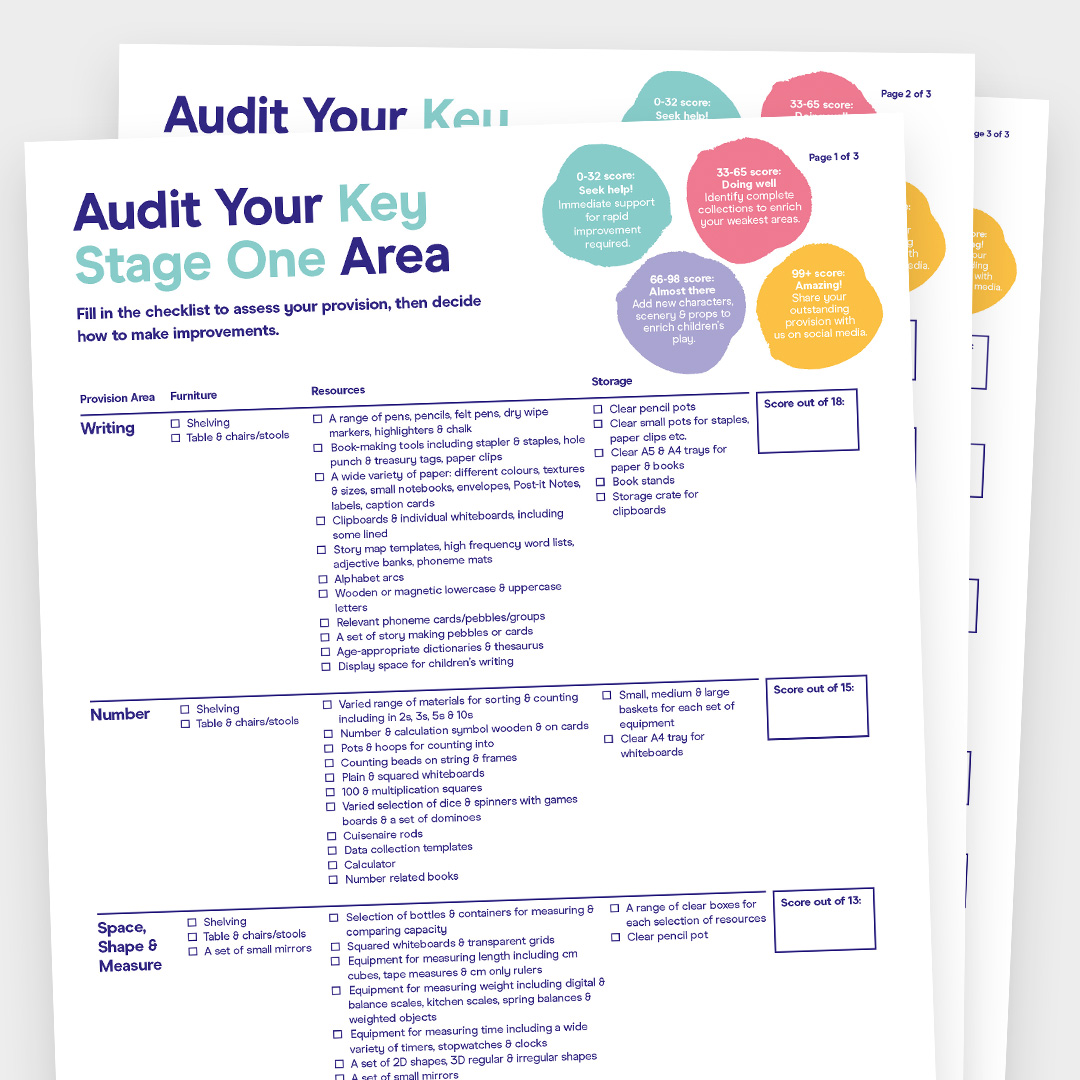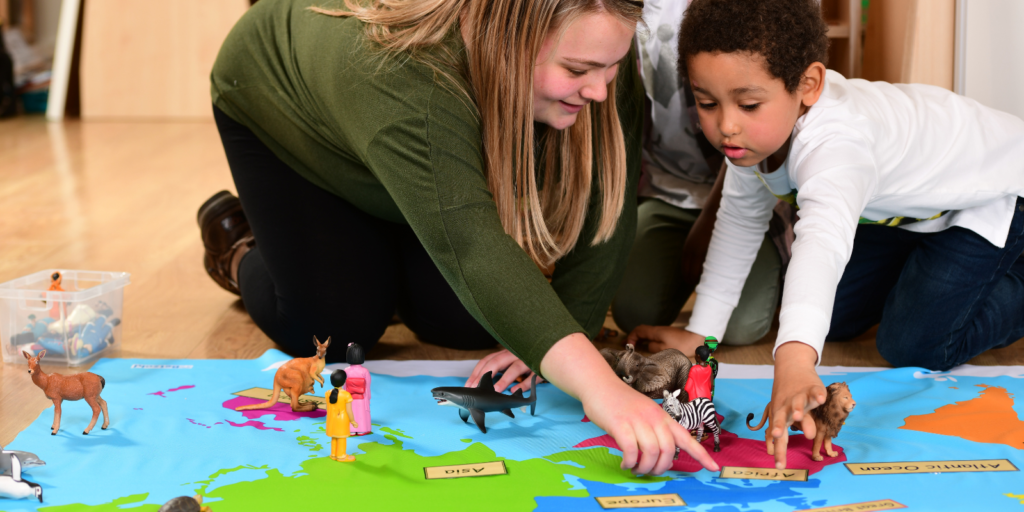Working in Key Stage One, it can sometimes feel as if the Curriculum is weighing us down – looming over every decision we make. It can feel unmanageable and ‘too big’. To help reduce that load we need to find ways to build some key aspects of learning into our routines and the day-to-day life of the classroom. All too often, we plan learning for the sessions we teach, we plan our Continuous Provision – but what about the spaces around these? What other aspects of our environment can we carefully plan, what about all the little bits of time – the ‘befores and afters’, the in-between times? There is learning to be fitted in here too, if we look for it.
We know that children need to revisit learning in order to embed it, to make it stick. So let’s consider some of the ways we can both ‘manage’ the Curriculum and plan for children to reinforce learning. But first, a word of caution: it is easy to get carried away with ideas, establishing routines and approaches that then get abandoned as we either don’t have the time to fit them in or we’ve made them too complex. Bear in mind these two things: does it make sense in the context you are using it (avoid tenuous links), and can you build it in easily?
Using taught approaches in context
Consider some of the concepts or models that you need children to understand. Which of these can be transferred to a classroom context? A good example would be the part-whole model. Where might this work for your children? Packed lunches or school dinners? Who has had snack or has been outside? Something that you do every day, probably at the same time; where if you forget, the children will remind you. You might organise water bottles or resources onto ten frames or use them to self-register.
Relentlessly look for learning, and reference regularly
There are many areas of learning that are sometimes taught in isolation: a two-week block on 3D shape or Time, for example. Often, we don’t return to these concepts for some time, meaning children may not retain everything they had achieved by the end of that initial block. In some cases, we can provide opportunities for this within our Continuous Provision. A high-quality Block Area will contain a range of regular 3D shapes, including pyramids and cones, and adults will recognise the learning that these wooden blocks support. Other aspects of the National Curriculum do not lend themselves so neatly to being part of provision.
Let’s consider at some examples. Children are learning to name and locate the continents and oceans. Aside from the difficulty of the concept – asking children to imagine a 3D object represented as a 2D one, when we know that 3D shapes do not easily transfer to a 2D (try making a rectangle from a peeled orange!) – children then have to understand what each aspect of that map represents. Where is the coast? Where is the sea? Where does one sea start, and another begin, can you see the line? Why are some continents separate and others joined to each other? Who decides which is which? Why are they all different colours? etc, etc. Then they have to remember what each one is called. Not only does this need regular revisiting but is also something that most children enjoy, so why not build it in more often. Find space for a large world map – preferably on the wall at child-height, somewhere you can talk about it with them. Refer to it whenever there’s a link- a setting in a book, a news event, children arriving from a different country, holidays, the weather and so on. Sometimes this might only be a chat for a few minutes but what is important is the drip-feed – the little but often. How might you extend this approach? Perhaps by making comparisons to the non-European countries you study. By using a map of the UK and finding the possibilities for extending their understanding of where they live, as well as the area of the UK you have planned, adding the place where they live and the places they visit, the capital cities; by frequently referencing basic geographical vocabulary.
What else could you take a similar approach to? When could you show historical photographs to deepen children’s understanding of the past and the passage of time, as well as hearing and using everyday historical terms? When could you demonstrate that major events like floods, Royal funerals, space explorations etc have happened before? What about Science? Habitats, wildlife, materials… The more you begin to work in this way – using the ‘drip-feed approach’- the more you will be able to develop your long- and medium-term plans to incorporate it.
Assign responsibilities, collect and record
There are other areas where learning can be built naturally into a regular routine; something that children increasingly do independently over the year. A key one of these is the requirement that children observe and describe the weather, noticing seasonal changes. How much more sense does it make to do this regularly – for children to observe the changes as they experience them? How can we then develop this further than a daily ‘What’s the weather like today?’. Perhaps by establishing a weather station, by teaching children how to record the weather in symbols, how to measure the wind direction, rainfall, and temperature. Not only does this require children to work scientifically, but they will also need to record their observations, collate the date, and present their findings.
There are often plants in and around classrooms. How many of your children know what each of these plants is called? Where is its natural habitat? What are the care needs – where to locate it, when to water and feed it? Do they know the stages of its life cycle? Do you? See your plants (assuming they are real!), or fish, or the trees outside, as a resource collection. Check that you have a good variety and plan the learning. Then, small groups of children can take responsibility for monitoring them (often we just ask them to water the plants, not observe them) and again, they will need to observe, record and report.
Whatever routines you establish, you can then identify how these ongoing routines can be linked to your direct teaching, at different times of the year.
What’s the learning?
In the recent Ofsted Subject Report on the quality of geography teaching in the schools inspected in England, inspectors noted ‘Leaders rarely looked at the aims of the National Curriculum, or at guidance from subject associations, to help them choose what to teach about those topics.’ So let’s do that. Go back to the purposes, aims and attainment targets of the National Curriculum and plan the opportunities for repeating, revisiting, and deepening learning in all the small spaces of your day.
To help embed learning into your daily routine, take a look at our curated complete area sets for KS1, including Small Block Areas and Large Block Areas, or explore our wide range of Wooden Blocks and Rainbow Blocks for yourself!
Find out more

Enhance your KS1 teaching with Early Excellence.
Explore our KS1-focused courses and develop your practice. Elevate learning experiences and achieve exceptional outcomes for KS1.

Elevate your KS1 classroom with our expertly crafted Continuous Provision resources. Explore our shop for inspiring collections or partner with us for a tailored room plan with plans to ensure progression and maximise your space.

Assess your KS1 provision with our KS1 Provision Audit. Download now to enhance the quality of your learning environment and check if you have resources to support independent learning and enquiry.
Related Podcast

